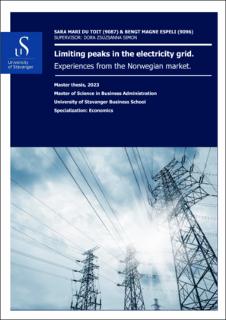| dc.description.abstract | Electrification leads to a need for more grid capacity, and at the same time, the grid is
underutilized. High demand occurs only during short periods. To reduce these high peaks,
utility companies have implemented a new network tariff to incentivize consumers to even out
their energy demand throughout the day and shift their demand from peak to off-peak hours.
Using hourly meter readings, survey-, weather- and spot price data, we analyze the effect of a
new tariff on households’ peak demand. We investigate the causal relationship between peakpricing and each household’s peak demand using a two-way fixed effects model. We further
explore the effects of Time-of-Use tariffs by doing a descriptive analysis. We find that
households have reduced their daily peak demand by ~2% after implementing the new network
tariff. The households with more occupants, more electric vehicles, or high income are among
the groups that have responded the strongest. Our descriptive analysis of Time-of-Use shows
a shift from peak- to off-peak hours due to this policy. While the results show a clear response
to both the peak-pricing and Time-of-Use components in the tariff, the tariff is insufficient to
reach the policy’s goal. We suggest shifting more focus to the Time-of-Use component. | |
